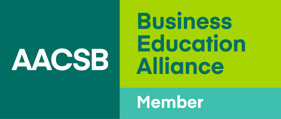If you’ve read our previous blogs on how to craft a compelling pitch or construct a powerful press release and have taken our advice to heart you’ll, hopefully, by now have been on the receiving end of some positive responses from journalists at your target publications.
So, that means your job is done, right? After all, the hard part is over. You hooked the journalist, got the green light for an interview, a quote, an op-ed etc. What more is there to do?
Plenty more, as it turns out.
All too often, communications professionals spend so much time focused on gaining a journalist’s attention, they forget to consider how to keep it.
Securing an opportunity for an interview is fantastic of course, but your efforts will only be of value if that interview goes well. Getting an initial “yes” from a journalist is only half of the job.
The next step is to turn that connection into coverage.
And, regardless of the fact that a journalist has agreed to speak with your spokesperson or receive a written comment from them, there is no guarantee this will result in their being quoted.
It’s rare that a journalist will only be speaking to one person or organisation to get what they need for their story. You’ve cut through the noise with your initial outreach. Now you must make sure your spokesperson can continue to stand out in a much smaller, but more competitive pool of voices.
So, how can you do that?
There are three key things to bear in mind…
Prioritise the journalist’s needs
Never forget that you are providing a service to the journalist – not the other way around. Your pitch might well have inspired them to write their story, but you’ll need to work to their deadlines and editorial needs in order to make that happen.
On a practical note, make sure your spokesperson can meet the journalist’s requirements; can they be free to speak at a certain time? Meet in a certain place or on the specified platform? Send a comment by an agreed date? Can they share requested images, stats, research etc?
Any request a journalist makes must be met – and met in good time. If not, it is likely they will switch their focus to someone who can.
More importantly, you MUST ensure your spokesperson can talk on the topic or provide the information that the journalist needs. There’s little point in showing up on time if you can’t provide the goods. This is where the need to be honest in your pitching reveals it’s importance. Any good journalist will know when they’re being oversold.
If your spokesperson cannot talk on the topic at hand it is important you are up front about that fact or else you risk embarrassing your spokesperson by putting them in a situation they are ill-equipped for, and may quickly find yourself blacklisted by a journalist who might feel their time has been wasted.
In the instance your spokesperson is not the expert you promised, or the journalist has shifted the angle of the article, can you offer an alternative – better – speaker?
If you can’t, let the journalist know immediately so that they can make alternative plans. The immediate opportunity might well be lost but effective, honest communications with the journalist might help to leave the door open for future occasions.
Brief your spokesperson
It is your responsibility to make sure communications between a journalist and your spokesperson run as smoothly as possible. Aside of setting times, dates, locations and deadlines, you must also ensure your spokesperson knows what is expected of them. Take the time to brief them on the opportunity you have secured so that they can be as prepared as possible.
This does not mean scripting answers to pre-set questions for them (journalists prefer authenticity after all) as your spokesperson, if you’ve pitched them correctly, should be the best person to share their expertise.
Instead, it means using your expertise to fill in the possible blanks in theirs – give your spokesperson an insight into the nature of the media outlet, it’s typical output and target audience, share the wider context of the article the journalist is writing, give them a bio on who they will be interviewed by.
In short, prepare them for who they will be speaking to, so that they’re able to phrase their responses in the right way.
Remember, your spokesperson might be unfamiliar with speaking with media outside of academic circles. Stress the need for plain, accessible language, free of jargon and with real-life relevance. Media training might also be worth considering if your spokesperson will be engaging with journalists regularly.
Check in – but don’t chase!
Once the comment has been submitted or the interview has been completed, it is good practice for a communications professional to follow up with the journalist to ensure they have all the information they need and to offer any further assistance.
You can ask the journalist what the next steps might be, so that you can keep your spokesperson updated, but a journalist is not obligated to share any further information with you, so beware of demanding it from them.
PR professionals often earn a bad reputation amongst journalists by endlessly following-up on emails, demanding responses and spamming them with further, unnecessary information. There is no quicker way to find yourself blacklisted than by doing any of the above.
An initial follow-up is fine. A subsequent enquiry after a period of no contact to enquire about what might happen next is also acceptable. But where journalists fail to respond to your pleas, take the initiative to do your own research – regularly check the stories published by the publication or make use of media monitoring services so that it is not the journalists responsibility to share it with you.
Get it right? Get results!
If you can follow the above advice, not only will secure a greater conversion rate for turning interviews into coverage, but you’ll begin to develop a greater press presence for your institution and its experts as a result. From there not only will their status and reputations grow, but your institution’s will too.
And as for the journalists? Well, one positive experience with your faculty might turn into two, three, four… great relationships are built on solid, honest communications.
We can help you establish that.
Want to know more? Get in touch.
Originally published December 2016, updated October 2023

Kerry is the Head of Practice at BlueSky Education and a former BBC journalist.
Recognised in the graduate management education arena as a leading authority on communications for the industry, Kerry has more than a decade of experience in the media and public relations.




